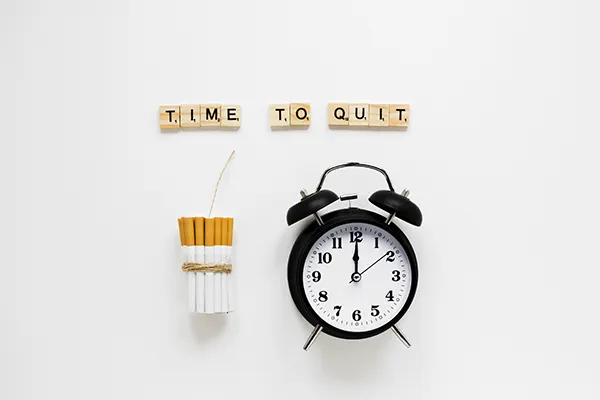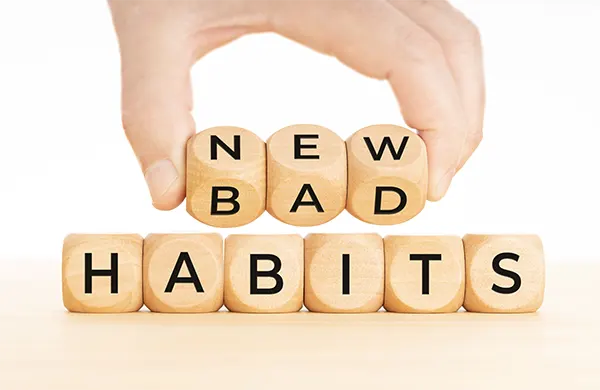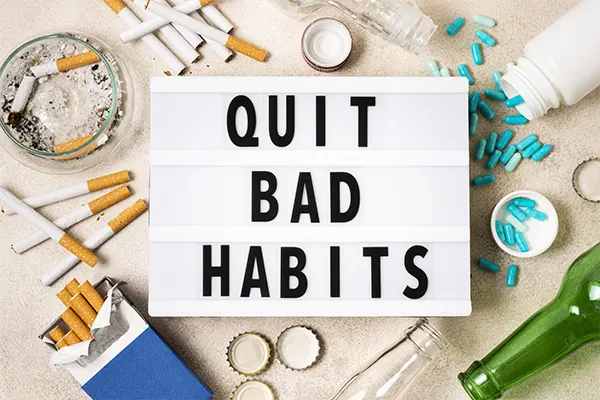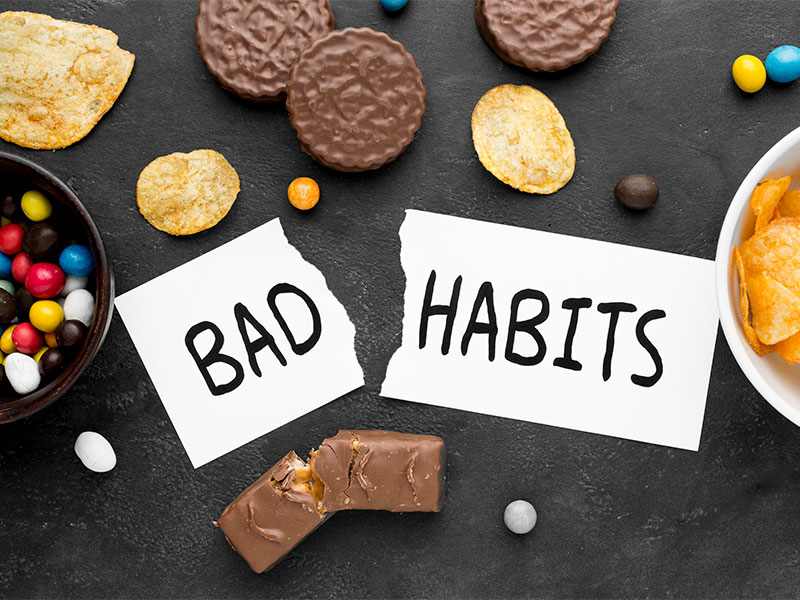We all have habits—small behaviors or actions that we repeat regularly, often without thinking. Some of these habits are beneficial, like brushing our teeth or exercising daily, but others can be detrimental to our health, well-being, or productivity. Whether it’s biting your nails, procrastinating, smoking, or spending too much time on social media, breaking bad habits is often a challenging yet crucial step toward personal growth. Bad habits, no matter how deeply ingrained, are not permanent. With the right strategies, patience, and determination, anyone can break the cycle of these negative behaviors. In this article, we will explore how to break bad habits, why they form, and provide actionable tips to help you eliminate them from your life. If you’re looking for a transformative journey toward self-improvement, this guide is for you.
What Are Bad Habits and Why Do They Form?
Before diving into the methods to break bad habits, it’s important to understand what habits are and why certain behaviors become ingrained in our daily lives.
- Defining Habits
Habits are automatic behaviors that we perform without much conscious thought. They are formed through repeated actions that eventually become ingrained in our brains, often triggered by specific cues or situations. For example, if you grab a snack every time you feel stressed, the cue (stress) triggers the habitual behavior (eating). Over time, this repeated behavior forms a loop that is difficult to break.
The Psychology Behind Bad Habits
Bad habits, like all habits, develop through a process called “cue-routine-reward.” This is also known as the habit loop, a concept made popular by Charles Duhigg in his book The Power of Habit. The loop consists of:
- Cue: A trigger that initiates the habit. This could be a time of day, a specific emotional state (boredom, stress), or even an environmental factor (seeing your phone on the table).
- Routine: The behavior or action itself. For example, if the cue is boredom, the routine might be mindlessly scrolling through social media.
- Reward: The benefit or pleasure you get from completing the routine. This could be the temporary relief from boredom or stress, even if the habit isn’t beneficial in the long run.
The cycle becomes automatic as the brain associates the cue with the reward, reinforcing the behavior. To break bad habits, we need to interrupt this cycle and replace it with healthier alternatives.

Why Breaking Bad Habits Is So Difficult?
Breaking bad habits can feel daunting, and there are several reasons why it’s such a challenge:

- Automatic Nature: Habits are ingrained in the brain’s neural pathways, making them automatic responses to certain triggers.
- Immediate Rewards: Many bad habits provide short-term pleasure or relief, such as emotional eating, smoking, or procrastinating. The immediate reward makes the behavior hard to resist, even when we know it’s harmful in the long term.
- Comfort Zones: Bad habits often offer a sense of comfort or familiarity. Changing these behaviors requires stepping out of that comfort zone, which can be uncomfortable or anxiety-inducing.
- Lack of Awareness: Many people engage in bad habits without even realizing it. The first step toward change is often becoming aware of the habit and its negative consequences. Invest in YOU! With the help of charismatic personality grooming classes, you can develop the communication skills, confidence, and charisma to command any room and create lasting success.
How to Break Bad Habits: Practical Steps for Success

Breaking bad habits requires both self-awareness and a structured approach. Below are proven steps and strategies to help you eliminate these behaviors and replace them with healthier, more productive ones.
- Identify the Habit and Its Triggers
The first step in breaking a bad habit is to become fully aware of it. What is the habit you want to break, and what triggers it?
- Recognize the habit: Be honest with yourself about the habit you want to break. Whether it’s procrastination, unhealthy eating, smoking, or something else, write down exactly what the behavior is.
- Identify the triggers: Pay attention to what triggers your habit. Do you snack when you’re stressed? Do you procrastinate when faced with a difficult task? Understanding the specific cue that leads to your bad habit will help you address the root cause.
Tip: Keep a habit journal where you record the times you engage in the habit, what triggered it, and how you felt afterward. This will help you spot patterns.
Visit: how to set personal boundaries
2. Understand the Consequences
Next, it’s important to understand the negative consequences of the habit. This will help you build motivation to change.
- Physical Consequences: How does the habit impact your health? For instance, smoking can lead to serious lung damage, while a sedentary lifestyle may contribute to weight gain or chronic health conditions.
- Emotional Consequences: How does the habit make you feel? Does it leave you feeling stressed, guilty, or unproductive? For example, procrastination may provide short-term relief, but it often leads to anxiety and last-minute panic.
- Social Consequences: How does the habit affect your relationships or social life? For instance, spending too much time on your phone may distance you from your loved ones or lead to missed opportunities for real-life connections.
Tip: Create a list of the negative effects of the habit. This will serve as a reminder of why you need to change.
3. Set Clear, Specific Goals
To break a bad habit, you need a clear and realistic plan. Simply deciding to “stop” isn’t enough. You need to set specific, actionable goals.
- Make the goal clear: Instead of saying “I want to stop eating junk food,” set a specific goal such as, “I will replace chips and candy with fruit during my afternoon snack.”
- Start small: Breaking a habit takes time. Start with small, manageable changes. For instance, if you want to cut down on screen time, you might start by reducing phone usage by 15 minutes per day, gradually increasing the time over several weeks.
- Use SMART goals: Make sure your goals are Specific, Measurable, Achievable, Relevant, and Time-bound. For example, “I will exercise for 20 minutes every day for the next 30 days” is a SMART goal.
Tip: Write down your goals and keep them visible—on your phone, your desk, or somewhere you’ll see them daily. This will keep you motivated.
4. Replace the Bad Habit with a Good One
One of the most effective ways to break a bad habit is to replace it with a healthier or more productive behavior. Since habits follow a cue-routine-reward loop, it’s difficult to simply stop a behavior without filling the void it leaves.
- Identify a replacement habit: Think of an alternative behavior that offers a similar reward. For example, if stress triggers you to eat junk food, try replacing that with a 10-minute walk or practicing deep breathing to relieve stress.
- Make the replacement habit easier: Make the new behavior as convenient as possible. For instance, if you want to replace snacking with healthier options, keep fresh fruits or nuts readily available instead of sugary snacks.
- Reward yourself: Make sure the new habit also provides a reward. For example, after completing a 10-minute walk instead of reaching for junk food, reward yourself with a small treat like a healthy smoothie or relaxing music.
Tip: Practice the new behavior consistently until it becomes automatic. It typically takes about 21 to 66 days to form a new habit, so be patient with yourself. Become Unstoppable! Our personality development classes in Gurgaon help you conquer self-doubt and radiate confidence in your personal and professional life.

5. Use the “Two-Minute Rule”
Breaking a bad habit can feel overwhelming, especially if it’s deeply ingrained in your routine. The Two-Minute Rule, a strategy popularized by productivity expert James Clear, suggests that you start with habits that take only two minutes to complete. The idea is to lower the barrier to action, making it easier to begin.
- How it works: If you want to break the habit of skipping workouts, start by committing to just two minutes of exercise. This small step reduces the resistance you feel toward working out and gets you into the habit of taking action.
- Why it works: The hardest part of changing any habit is starting. Once you begin a task, you’re more likely to continue. Even if it’s just a small step, it builds momentum.
Tip: Apply the Two-Minute Rule to any habit you want to break. If you want to stop procrastinating, start by spending just two minutes working on a task. Often, once you begin, you’ll feel motivated to continue.
Visit: benefits of lifelong learning
6. Change Your Environment
Your environment plays a significant role in shaping your habits. The people, places, and things around you often trigger habitual behavior. To break a bad habit, consider changing your environment to reduce temptations or triggers.
- Remove triggers: If you’re trying to stop eating junk food, remove unhealthy snacks from your home. If you want to reduce screen time, consider leaving your phone in another room while you work.
- Add positive cues: Make it easier to engage in healthier habits by surrounding yourself with positive triggers. For example, if you want to start exercising in the morning, lay out your workout clothes the night before.
- Create a new routine: Changing your daily routine can help disrupt the habit loop. If you’re used to checking your phone first thing in the morning, try replacing that routine with a new behavior, such as stretching or journaling.
Tip: Identify the environmental factors that reinforce your bad habit and actively change them to support healthier behaviors.
7. Develop a Strong Support System
Breaking a bad habit can be difficult to do alone. Surrounding yourself with supportive people who encourage your progress can make a significant difference. Friends, family, or a coach can provide motivation, accountability, and guidance.
- Find an accountability partner: Share your goals with a trusted friend or family member who can hold you accountable. They can check in with you regularly to see how you’re progressing.
- Join a support group: If you’re trying to break a more challenging habit, such as smoking or overeating, consider joining a support group where you can connect with others going through similar struggles.
- Celebrate small wins: Share your successes, no matter how small, with your support system. Celebrating progress with others will help reinforce positive change and keep you motivated.
Tip: If you’re struggling with a tough habit, such as addiction, seeking professional help from a therapist or counselor can provide you with the tools and support you need to succeed.
8. Practice Self-Compassion
Breaking a bad habit is not an easy journey, and there will likely be times when you slip up or revert to old behaviors. When this happens, it’s important to practice self-compassion instead of beating yourself up.
- Avoid perfectionism: Understand that setbacks are a normal part of the process. No one is perfect, and expecting flawless progress will only lead to frustration and disappointment.
- Learn from slip-ups: Instead of viewing slip-ups as failures, see them as learning opportunities. Reflect on what triggered the relapse and adjust your strategy to avoid similar situations in the future.
- Be kind to yourself: Remind yourself that breaking a bad habit takes time, and you’re making progress even if it’s not linear. Encourage yourself with positive affirmations and focus on how far you’ve come.
Tip: Keep a journal of your progress and setbacks. Reflecting on your journey can help you maintain perspective and stay focused on your long-term goals.
9. Use Habit-Tracking Tools
One of the best ways to stay motivated when breaking a bad habit is to track your progress. Seeing tangible results can reinforce your commitment and give you a sense of accomplishment.
- Create a visual tracker: If you prefer a more hands-on approach, create a habit-tracking chart where you mark off each day that you successfully avoid the bad habit. Seeing a visual representation of your progress can be a powerful motivator.
- Set rewards: Reward yourself for reaching certain milestones. For example, after a week of successfully avoiding the habit, treat yourself to something you enjoy, like a movie night or a favorite snack.
Tip: Celebrate your progress regularly, even if it’s small. Positive reinforcement will help keep you on track and build momentum.
10. Stay Patient and Persistent
Finally, breaking a bad habit takes time, persistence, and patience. It’s important to remember that habits don’t form overnight, and they won’t disappear overnight either. The key is to stay committed and view each day as an opportunity to move closer to your goal.
- Focus on progress, not perfection: Measure your success by the progress you’ve made rather than expecting immediate results. Every small step forward is a victory.
- Stay flexible: If one approach isn’t working, don’t be afraid to adjust your strategy. Experiment with different techniques until you find what works best for you.
- Commit to long-term change: Breaking a bad habit isn’t a short-term fix; it’s about creating lasting, positive change. Stay focused on the bigger picture and keep working toward a healthier, more productive lifestyle.
Tip: Remind yourself of the benefits of breaking the habit. Whether it’s better health, more free time, or improved relationships, keeping your long-term goals in mind will help sustain your motivation.
Visit: how to improve digital resilience
Conclusion: How to Break Bad Habits
Breaking bad habits is a journey that requires self-awareness, patience, and determination. By understanding the habit loop, identifying your triggers, and replacing negative behaviors with positive ones, you can create lasting change in your life. It’s important to set realistic goals, practice self-compassion, and stay consistent in your efforts. Surrounding yourself with a supportive environment and using tools like habit trackers can help keep you accountable and motivated.
While the process of breaking bad habits can be challenging, it is also gratifying. As you shed unhealthy patterns and adopt more positive behaviors, you’ll notice improvements in your physical health, emotional well-being, and overall quality of life. Remember, learning how to break bad habits is not about perfection but about progress. With dedication and the right strategies, you can break free from negative patterns and create a life that aligns with your values and goals.


